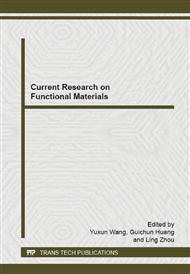[1]
E.D. Wachsman, K.T. Lee, Science, 334 (2011) 935-939.
Google Scholar
[2]
S.P. Jiang, Y. Zhen, Solid State Ionics, 179 (2008) 1459-1464.
Google Scholar
[3]
S. Koch, Solid State Ionics, 168 (2004) 1-11.
Google Scholar
[4]
W. Schäfer, A. Koch, U. Herold-Schmidt, D. Stolten, Solid State Ionics, 86 (1996) 1235-1239.
Google Scholar
[5]
Z. Lu, G. Xia, J.D. Templeton, X. Li, Z. Nie, Z. Yang, J.W. Stevenson, Electrochemistry Communications, 13 (2011) 642-645.
Google Scholar
[6]
Z. Yang, G. Xia, P. Singh, J.W. Stevenson, Journal of Power Sources, 155 (2006) 246-252.
Google Scholar
[7]
X. Montero, F. Tietz, D. Stöver, M. Cassir, I. Villarreal, Journal of Power Sources, 188 (2009) 148-155.
Google Scholar
[8]
M.R. Ardigò, A. Perron, L. Combemale, O. Heintz, G. Caboche, S. Chevalier, Journal of Power Sources, 196 (2011) 2037-(2045).
DOI: 10.1016/j.jpowsour.2010.09.063
Google Scholar
[9]
Y. Zhen, S.P. Jiang, Journal of Power Sources, 180 (2008) 695-703.
Google Scholar
[10]
W. Zhang, F. Wang, K. Wang, J. Pu, B. Chi, L. Jian, International Journal of Hydrogen Energy, 37 (2012) 17253-17257.
Google Scholar
[11]
L.T. Wilkinson, J.H. Zhu, Journal of The Electrochemical Society, 156 (2009) B905.
Google Scholar
[12]
F. Wang, D. Yan, W. Zhang, B. Chi, J. Pu, L. Jian, International Journal of Hydrogen Energy, 38 (2013) 646-651.
Google Scholar
[13]
M. Hrovat, N. Katsarakis, K. Reichmann, S. Bernik, D. Kus̆c̆er, J. Holc, Solid State Ionics, 83 (1996) 99-105.
Google Scholar
[14]
M.C. Tucker, L. Cheng, L.C. DeJonghe, Journal of Power Sources, 196 (2011) 8313-8322.
Google Scholar
[15]
H. Kurokawa, Solid State Ionics, 168 (2004) 13-21.
Google Scholar
[16]
T. Brylewski, M. Nanko, T. Maruyama, K. Przybylski, Solid State Ionics, 143 (2001) 131-150.
Google Scholar
[17]
M.C. Tucker, L. Cheng, L.C. DeJonghe, Journal of Power Sources, 196 (2011) 8435-8443.
Google Scholar
[18]
B. Hua, J. Pu, F. Lu, J. Zhang, B. Chi, L. Jian, Journal of Power Sources, 195 (2010) 2782-2788.
Google Scholar
[19]
B. Hua, Y. Kong, W. Zhang, J. Pu, B. Chi, L. Jian, Journal of Power Sources, 196 (2011) 7627-7638.
Google Scholar
[20]
T. Horita, Y. Xiong, H. Kishimoto, K. Yamaji, N. Sakai, H. Yokokawa, Journal of Power Sources, 131 (2004) 293-298.
DOI: 10.1016/j.jpowsour.2003.10.017
Google Scholar


